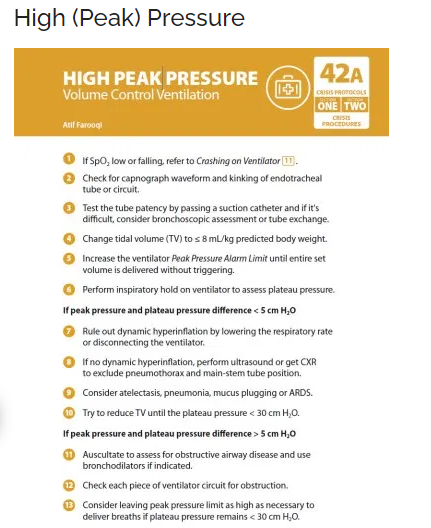Links to and excerpts from EMCrit 239 – Vent Alarms = Code Bluet [Link is to the podcast and show notes] January 26, 2019 by Dr Scott Weingart.
This EMCrit 239 is part of Dr Weingart’s minicourse [my term] EMCrit – Critical Care for Non-Intensivists during COVID19 Pandemic [Link is to his excellent post-I’m working my way through all of his resources on the post].
March 25, 2020 by Dr Scott Weingart
Here is the podcast of EMCrit 239:
And here are excerpts from the show notes:
Vent Alarms should be Regarded as Code Blue
If you cannot instill the above into your culture, patients will die
If they are crashing, do DOPES [Link is to EMCrit Podcast 16 – Coding Asthmatic, DOPES and Finger Thoracostomy
December 23, 2009 by Dr Scott Weingart]Or if you have The Resuscitation Manual, go to Chapter 11, Crashing On the Ventilator [When you purchase the manual you will recieve a PDF copy which you can put on your smart phone, or tablet.}
So in the show notes, Dr. Weingart goes through how we approach the alarms if the patient is not crashing meaning that:
- the oxygen saturation is not low or falling.
- the patient is not hypotensive
- the patient does not have a zero end-tidal CO2
- the patient does not look like he or she is in extremis
Note to myself: Dr Weingart’s show notes are a perfect checklist.
Resuming the excerpts:
This chart is from The Resuscitation Crisis Manual [Not an affiliate link]
Dyssynchrony
- Patient-Ventilator Dyssynchrony
by Dr Chris Nickson, last update March 29, 2019 from Life in the Fast Lane- Patient-Ventilator Dyssynchrony [PubMed Abstract] [Full Text HTML] [Full Text PDF] Korean J Crit Care Med. 2017 Nov; 32(4): 307–322.
Peak Only
- Check the circuit
- fluid pooling in circuit
- fluid pooling in filter
- kinking of circuit
- Tube too small or biofilmed
- Bronchospasm
- Biting on ETT
Low Peak Pressure
- Disconnected
- ETT Cuff Deflated
- Pt effort
Low Ve/Vt
- Cuff Issues (See EMCrit Wee )* *Wee – Avoiding Disaster – Endotracheal Tube Cuff Leaks and Tube Exchanges
August 28, 2015 by Scott Weingart</li> [I wasn’t able to follow this Wee. But then I watched the YouTube video that Dr. Weingart included and it was clearer to me.]- Bronchopleural Fistula
Low O2 Alarm
- Not hooked Up
- Gases Messed Up
- Sensor Messed up
What to Do with Continued Alarms Despite Sedation, Equipment Check, Suctioning
- Consider Bronchoscopic Assessment
- If Patient begins to crash, consider tube exchange if bronch not available
Article On Vent Alarm Stats
Ventilator Alarms in Intensive Care Units: Frequency,
Duration, Priority, and Relationship to Ventilator
Parameters [PubMed Abstract] [Full Text PDF] Anesth Analg. 2018 Sep 18.Assessing High Peak Pressures
Alarms from the ventilator: Troubleshooting high peak pressures from ALiEM Jul 30, 2013
By: Todd A. Seigel, MD





